| Face Shape | Chinese Character |
Translation |
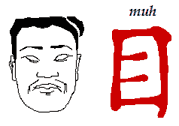 |
(1) Focus eye or attention on person or thing; (2) Distress, wounded soldiers. | |
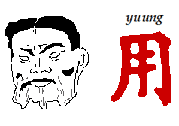 |
(1) A tunnel; (2) Covered corridor or passageway. | |
 |
(1) Incant, read with intonation; (2) See a point by clever analogy. | |
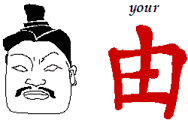 |
(1) Story, course of events; (2) how something happened; (3) Basic cause. | |
 |
(1) A country, nation; (2) National treasures (e.g. ancient objects of art). | |
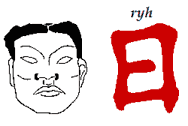 |
(1) The Sun. | |
 |
(1) Number 9; (2) God. | |
 |
(1) Farm; (2) The mind considered as ground for cultivation. | |
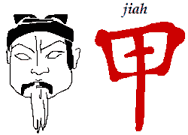 |
(1) The first; (2) The beginning. |
|
 |
(1)Up to a point or period of time; (2) Until now. | |
The Secret Codes of the Terracotta Warriors
By
Maurice Cotterell
That cold crisp day, in the spring of 1974, is one the people of Lintong
province will never forget. For a brief split second the vaporised
breath of three young farmers was all that remained of the men who moments
earlier
had toiled together.
It seemed that the field, two miles from Xiyang, had swallowed them
up, together with the drill, the tripod and several wooden buckets,
that
were to provide – once they had recovered from the shock of the fall – a
means of escape.
They had tumbled into an ancient passageway, which collapsed around
them, sending clouds of dust bellowing high into the sky above. As
it cleared,
they found themselves surrounded by an army of warriors in full battledress;
a life-size army of terracotta soldiers that gazed, expressionless,
at the unexpected intruders. Within hours archaeologists, from the
nearby
town of Yanzhai, arrived to seal the site from prying eyes.
Test digs confirmed that more than 8,000 life-size terracotta soldiers,
buried more than 2,000 years ago, around 220 BC, filled four concealed
underground chambers.
Archaeologists were surprised to find that the shapes of the faces
[taken together with the shape of the head and the hairstyle] of the
8,099 soldiers,
corresponded to just 10 shapes of the 10,516-character Chinese alphabet.
Curiously, although the official site record from Xian provides the
names of the characters, archaeologists never explained their meaning.
Perhaps
it never occurred to them to enquire what each of the characters stood
for. Or perhaps they knew, and preferred not to say. In any event,
they hastily reburied the soldiers and concealed the test holes.
Nobody was allowed near the site for almost two years, when excavation
recommenced, although the authorities never said why. To this day the
official site guide refuses to give the meaning of the 10 Chinese characters.
It's hard to see the reason for the secrecy. After all, Chinese – English
dictionaries are freely available throughout the Western world to provide
definitions of the characters... which reveal a secret message...
Focus the eye on the soldiers in the covered tunnels. Read the meaning
of the national [Chinese] characters differently; use the mind to understand
the story which spans from the beginning of time until now; a story
about the Sun and God.
In The Mayan Prophecies, The Supergods, The Tutankhamun
Propehecies and The Lost Tomb of Viracocha, international bestselling
author Maurice
Cotterell explained how the leaders of the Mayas, the Egyptians,
and
the Peruvians possessed a scientific understanding of a very high
order, one that modern man is only now beginning to grasp. And, they
taught
that the soul is imperishable, everlasting and – for the pure – destined
for the stars; rebirth on earth awaits the rest. So they encoded
their secrets into their treasures to give those that failed this
time a
better chance of redemption, the next time around.
With this unique understanding of how and why ancient civilisations
went to such lengths to preserve their secrets Maurice Cotterell
decodes the
long lost secrets of China's terracotta army to reveal the farewell
message of the first Emperor.
5 separate codes are concealed in the warriors. The face shapes is
just one of them. The decoded stories reveal extraordinary knowledge
found
in other
spiritual texts (including the Book of Revelation in the Christian Bible,
and the Hindu Bhagavad Gita) that explain the true purpose of life;
why we live,
why we die and why this has to be – and the remarkable secrets of
heaven, hell, and immortality.
The man who broke the codes of the Mayas, Egyptians, and Peruvians has broken the codes of the terracotta warriors